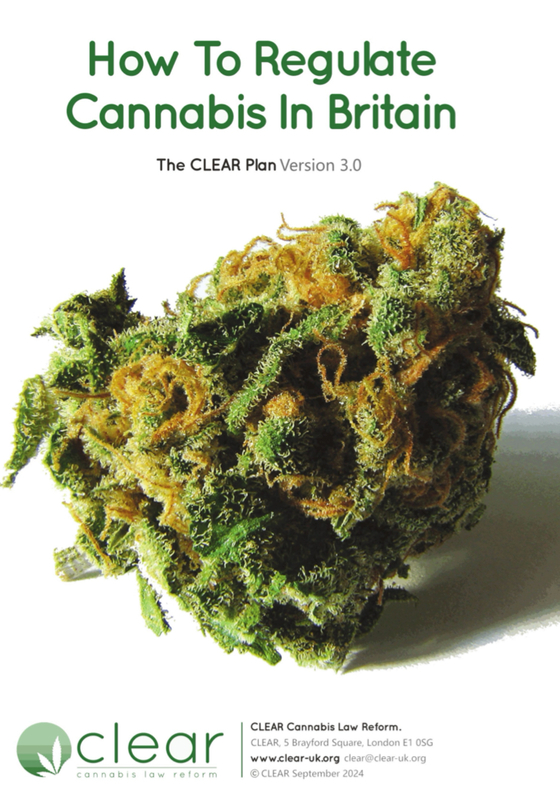
At CLEAR, the proposal for cannabis legalisation goes beyond just the medical use of cannabis—it seeks to create a fully regulated market that includes recreational use for adults. There are many aspects of the plan that demonstrate thoughtfulness and a commitment to public safety, but as with any major policy shift, it’s important to look at both the strengths and the potential risks that need to be addressed.
Strengths: Building a Safe and Regulated Market
CLEAR’s plan is built on the premise that regulation, not prohibition, offers the best way to manage the risks associated with cannabis use. The logic is sound: by bringing cannabis into a regulated framework, the government can ensure that products are safe, quality-controlled, and sold responsibly.
1. Public Safety Through Regulation:
One of the key advantages of this plan is its emphasis on quality control. By establishing a Cannabis Inspectorate, the plan outlines a clear mechanism for overseeing the cultivation, distribution, and sale of cannabis products. This inspectorate would be responsible for ensuring that all products are free from harmful contaminants, such as pesticides or heavy metals, and accurately labelled with cannabinoid content. This kind of oversight is critical in reducing the risks associated with unregulated cannabis products that currently flood the black market.
2. Protecting the Vulnerable:
The CLEAR plan also takes a responsible stance on protecting children and vulnerable groups. It advocates for strict age restrictions and ID verification at the point of sale, similar to the controls in place for alcohol and tobacco. These measures are essential for ensuring that cannabis remains out of the hands of those underage, while also creating opportunities for public education on harm reduction.
3. Tax Revenue and Public Health:
Another compelling aspect of the proposal is the potential for significant tax revenue generation. If cannabis were legalised and taxed similarly to alcohol or tobacco, the government could bring in billions of pounds annually, which could then be reinvested into public health initiatives, including harm reduction programmes and cannabis education. This is particularly important in ensuring that, alongside legalisation, we have strong public health messaging to prevent misuse.
Areas for Caution: Addressing the Risks
While the CLEAR plan is robust in many respects, there are areas that require careful consideration. As advocates for a legal and regulated market, we must be mindful of potential unintended consequences and ensure that the proposed system is flexible enough to address them.
1. Over-Regulation of Medical Cannabis:
One of the criticisms within the plan is that medical cannabis remains over-regulated. While it’s commendable that the plan seeks to broaden access by allowing GPs to prescribe Cannabis-Based Products for Medicinal Use (CBPMs), we must ensure that this does not lead to oversights in patient safety. Medical cannabis products are different from standard pharmaceuticals, and it’s important that they remain rigorously tested and monitored, particularly for consistency in cannabinoid content and potential interactions with other medications.
2. Balancing Commercial Interests with Public Health:
Total legalisation means opening the market to recreational use, and while this has clear benefits in terms of reducing black market activity, it’s vital to strike the right balance between commercialisation and public health. In regions like California, for example, high taxation and regulation have inadvertently allowed the illegal market to persist. The CLEAR plan acknowledges these lessons, but we must remain vigilant in ensuring that over-commercialisation does not lead to increased usage or dependence, particularly in vulnerable groups.
3. Ensuring Adequate Harm Reduction:
Harm reduction is a cornerstone of the CLEAR proposal, but we must take care to ensure that this is not just a box-ticking exercise. Retailers, for instance, would be required to display health and safety information at points of sale, but we must go beyond static literature. Continuous education, training for staff, and community outreach will be essential in making sure the message of responsible cannabis use reaches those who need it most, including recreational consumers.
The Path Forward: Careful, Responsible Legalisation
In conclusion, the CLEAR plan presents a strong framework for legalising cannabis in Britain, with clear benefits in terms of public safety, economic growth, and harm reduction. However, as with any major policy reform, we must proceed with caution. Ensuring that regulations are both robust and flexible will be key to making sure that the market benefits society as a whole, without introducing new risks.
By focusing on safety, public health, and harm reduction, we can create a cannabis market that works for everyone—patients, recreational users, and society at large.
Marika Graham-Woods, Executive Director, Cannabis Trades Association (CTA)
Published - 05/10/2024






